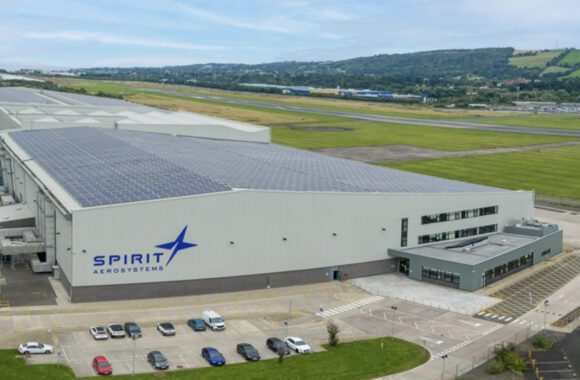
IMG ATR render ViewNacellleHaut
ATR is taking more time to launch the new EVO turboprop and now expects this to happen in early 2025. This is more than a year later than what the airframer said last year, although CEO Nathalie Tarnaud Laude said that it has always been the plan to have the aircraft available by 2030. ATR takes a year extra to launch the EVO.
When AirInsight spoke to then-Senior Vice President of Engineering, Stephane Viala, at the Farnborough Airshow in July 2022, he said that ATR had just received proposals from three engine makers. These would be evaluated to make a decision in late 2022-early 2023 and launch the EVO by the end of 2023.
In a media briefing on Tuesday at the Paris Airshow, Tarnaud Laude provided a different timeline. She said that a feasibility study is still being done and that a study of the proposals from engine manufacturers will be completed by the end of this year. This should lead to the launch of the EVO in early 2025.
“The most important thing in our industry is the entry into service of the aircraft, not the launch of the project. It has always been the case with the EVO that this program will enter service in 2030. We are not changing our plans. We want to make sure that we are making the right choice. We need a bit more time to convince ourselves,” said Tarnaud Laude, who entered the job of CEO in September as successor to Stefano Bortoli.
Bringing a significant improvement
“We want to bring significant improvements compared to where we are today. The idea is not to have another five percent better efficiency. The idea of EVO is to bring an additional twenty percent improvement in CO2 emissions compared to where we are today and make it compatible with 100 percent sustainable aviation fuel. So we are not changing our mind in terms of EIS, we just need a little bit more time to make sure that the choice of the technologies we are bringing together is the right one. Especially on the propulsion side, because that is the key part of the EVO.”
The EVO will include hybrid-electric technology to assist the aircraft during the climb. Vialle’s successor Daniel Cuchet said that a request for information was issued with the engine manufacturers last year. “I have to say we are quite happy with their answers. The results are overall quite good. We target a twenty percent better fuel consumption but also reduce direct maintenance costs in the range of twenty percent. This is a big target we set ourselves,” said Cuchet.
Asked how many engine makers had made proposals to ATR for the EVO, Cuchet said “This I can’t disclose, but we had very good offers from more than one manufacturer.”
Fabrice Vautier, Nathalie Tarnaud Laude, and Daniel Cuchet after the Paris Airshow media briefing. (Richard Schuurman)
Ramping up production
Tarnaud Lauda said that after a difficult 2022 with just 25 deliveries of the forty that were targeted, ATR intends to surpass forty this year. “And we are well on track for that.” Production currently is four aircraft per month and should go to five by the beginning of next year. The ambition is to slowly ramp up to around eighty deliveries by 2026 when she hopes that the supply chain is in much better shape and will be stabilizing. ATR is recruiting 150 employees to solve any labor issues.
SVP Commercial Fabrice Vautier said that the turboprop market has recovered well, notably in India, Bangladesh, and Nepal. Airlines are operating at 140-150 percent of 2019 capacity levels. Southeast Asia is slightly behind, specifically China and Indonesia. Worldwide, the ATR fleet is operating at 97 percent of pre-pandemic levels.
In its latest market forecast, ATR expects demand for 2.450 passenger turboprops and 550 freighter turboprops. Of the cargo variant, 510 are in the 70-seat segment and forty in the 50-seat segment.
Views: 17




